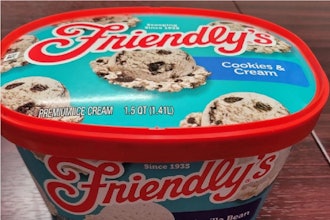Health-conscious consumers continue to seek fresh, minimally processed foods, challenging dairy manufacturers to find ways to maintain the high nutritional value of their products, while at the same time extending their shelf life. As the population grows and disposable income increases, consumer awareness of the high nutritional value of dairy products is fueling market growth in all regions, according to a report produced by Market Research Future.
The increasing popularity of dairy is a global phenomenon. Per capita volume growth of dairy in China, for example, is a strong 48 percent. Sales of plain yogurt alone in China are expected to see a 26 percent compound annual growth rate through 2020, and not far behind is India, at 16 percent, according to the Global Packaging Trends Report 2017 produced by Euromonitor and sponsored by leading packaging associations PMMI, the Association for Packaging and Processing, Australian Packaging and Processing Machinery Association, Italian Manufacturers of Automatic Packing and Packaging Machinery and the Processing & Packaging Machinery Trade Association.
With this growth comes a desire to extend the shelf life of dairy products. Even a few extra days of shelf life can be a significant benefit to the processor, the retailer and, ultimately, the consumer. Extending shelf life even beyond that — into the realm of an extra 30 or even 90 days — creates new and unique opportunities for the marketing of milk and other dairy products.
In order to achieve the desired extended shelf life, dairy producers look to packaging solutions. Why do some dairy products have longer shelf life than others? While this is a complex question, it typically comes down to factors such as packaging/processing method, packaging materials and hygiene.
The dairy industry uses various means and technologies aimed at achieving an extension in product shelf life. Traditionally, milk and other dairy products are treated at high temperatures to inactivate microbes and ensure product safety. The most common treatment is pasteurization, which can increase shelf life from seven to 20 days.
While there are other common methods, heat treatment remains the standard, primary factor that determines the shelf life. That said, processing at high temperature lowers the nutritional quality of foods because many nutrients are easily altered due to these high temperatures.
To overcome this problem, “cold processing” technologies using high pressure have been developed. Studies have revealed that high-pressure processing (HPP) can be used in the dairy industry to increase microbiological safety as well as to modify functional properties of food. This method has been considered equal to sterilization, which extends shelf life of foods due to its ability to inactivate bacterial spores at reduced heat and preserve desirable functional properties of foods better than conventional thermal processing.
In addition to extending the shelf life of dairy products, HPP treatment provides advantages over conventional processes due to its speed (a cycle takes about six minutes compared to traditional sterilization processes which takes an hour or more). Unlike thermal processing, food typically does not experience significant physical and chemical changes as HPP does not affect the flavor, nutritional value or texture properties of the product. One of the limitations of this process is that food must contain water, as the entire process is based upon compression.
Like any post-packaging process, HPP places demands on the packaging materials and the technology has limits. Products must contain enough moisture to transmit the pressure throughout, and as little air or headspace as possible — making vacuum-packed products such as some cheese ideal. But HPP can accommodate a range of packaging formats including bottles, jars, trays and flexible packages — as long as the package can flex about 15 percent on any one surface to withstand HPP compression.
In addition to flex, the package graphics need to be water-friendly, as the packages will be immersed in water. Because of this, labeling is many times done post-HPP to ensure quality.
Dairy products require packaging with high quality, high barrier material to prevent contamination, extend shelf life and to maintain freshness all the way to the consumer. HPP requires packages to have a hermetic seal, as any leakers will be obvious when the package exits the pressurized system.
No matter the package or process used, the key to extended shelf life begins with hygiene. The shelf life of a chilled dairy product cannot be extended without first raising the levels of hygiene across the whole dairy. By implementing advanced hygienic design in filling and packaging machinery, product recalls can be prevented, while also simplifying cleaning and reducing product and material waste.
However, to gain maximum benefit, it is important to look at the whole system. Extending shelf life is not just about technology and equipment, it is about a system. And its success is dependent on the hygienic strength of the entire production and distribution chain.






















